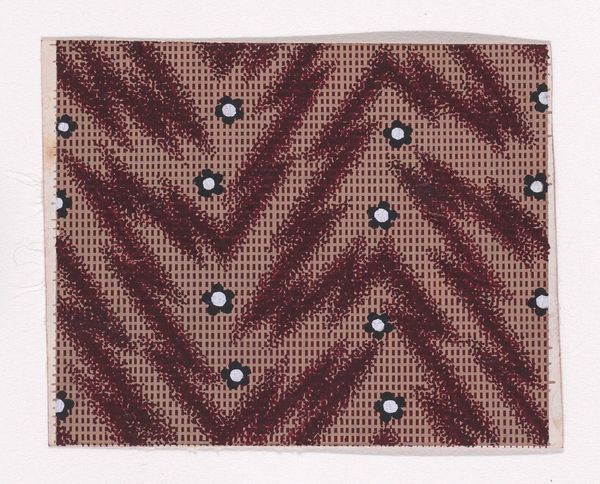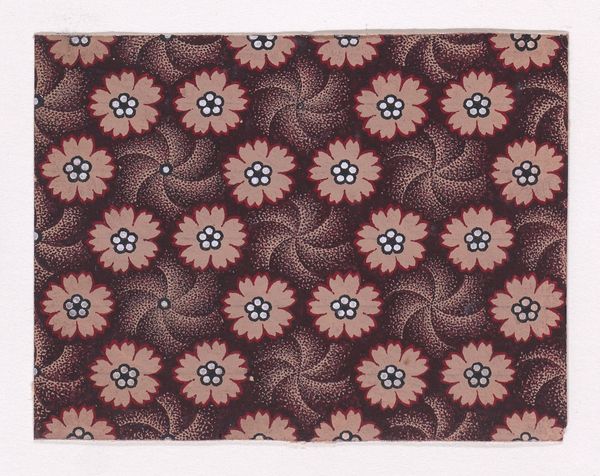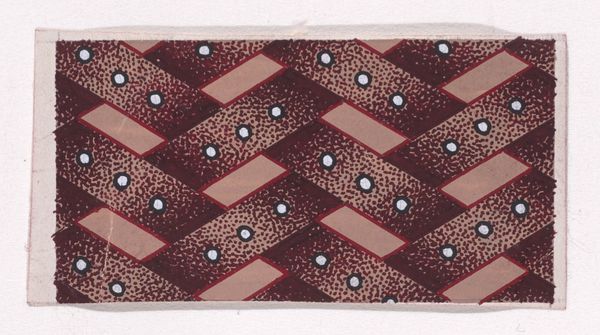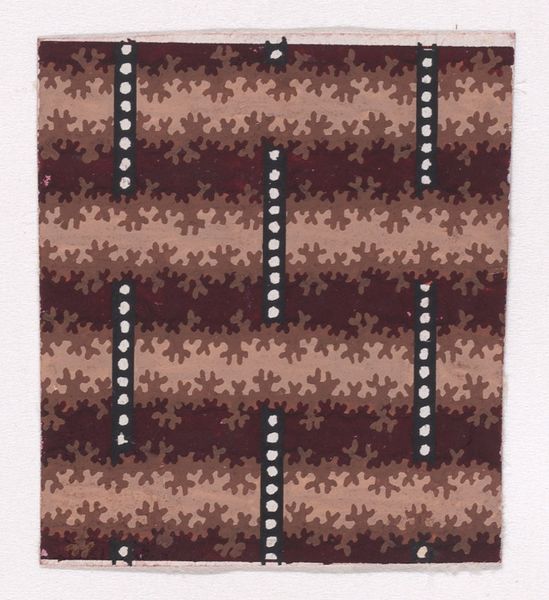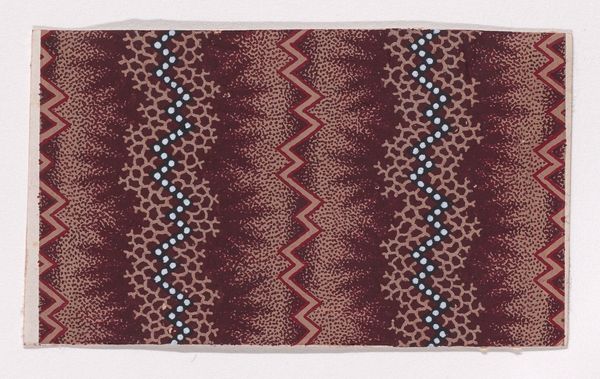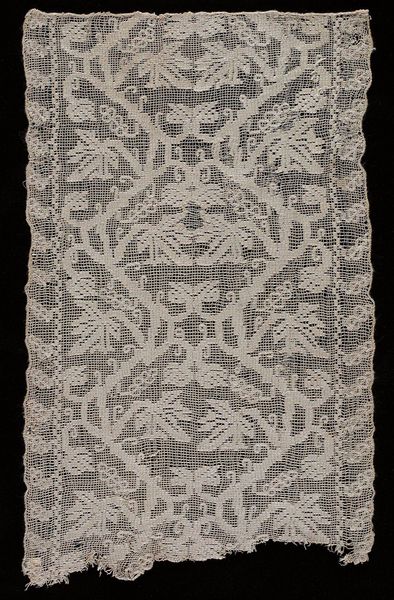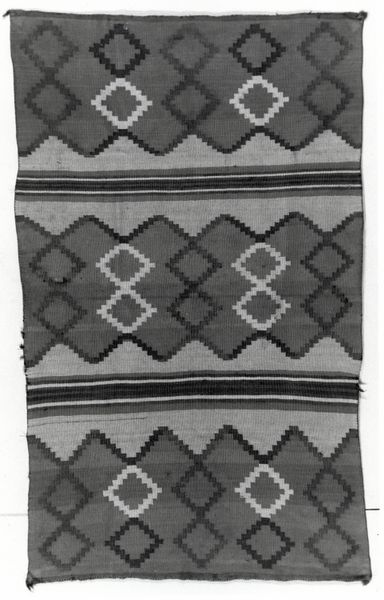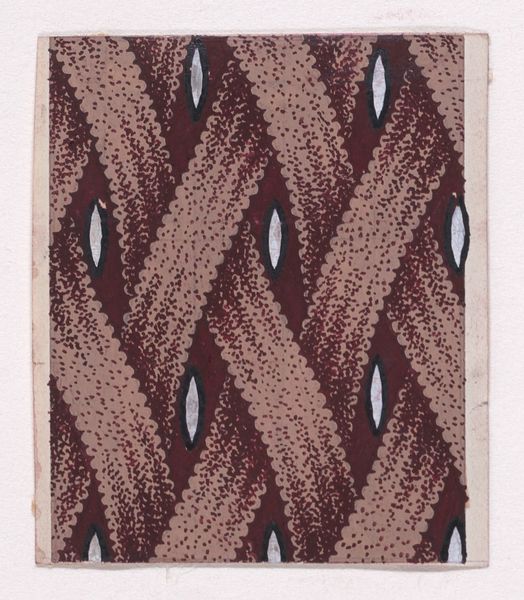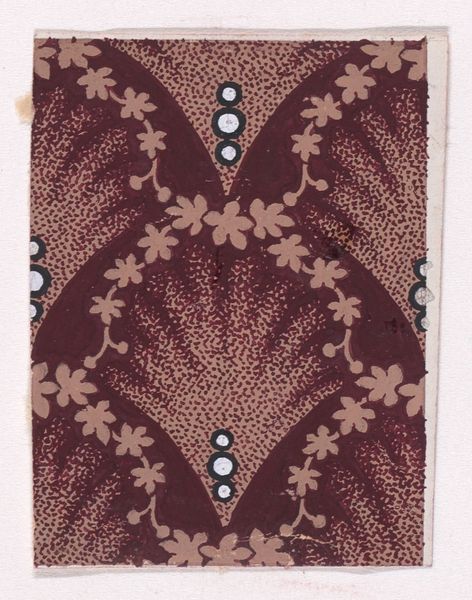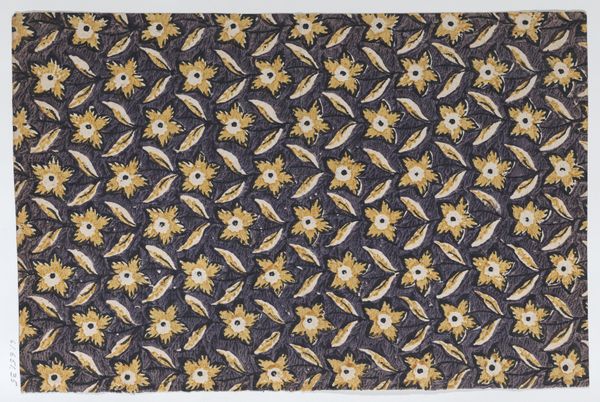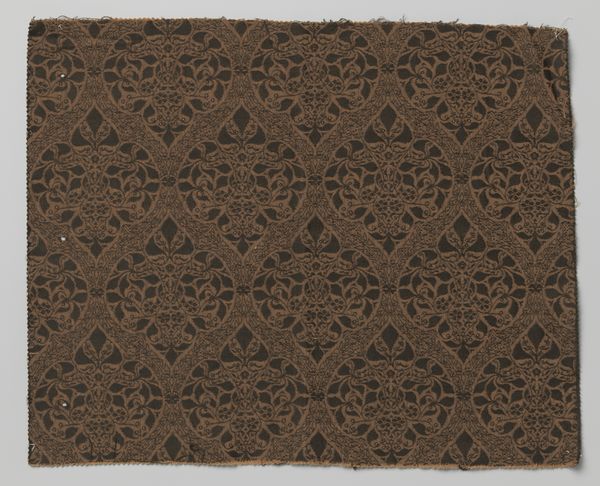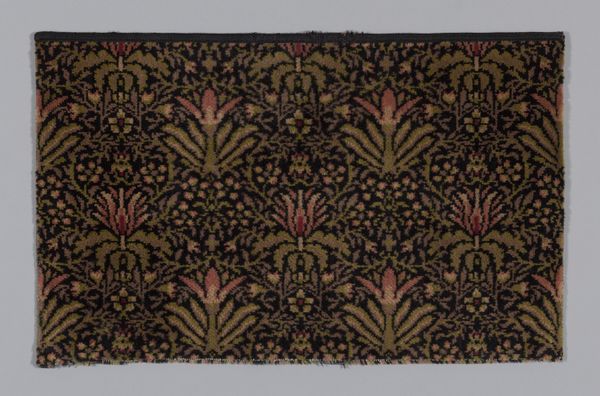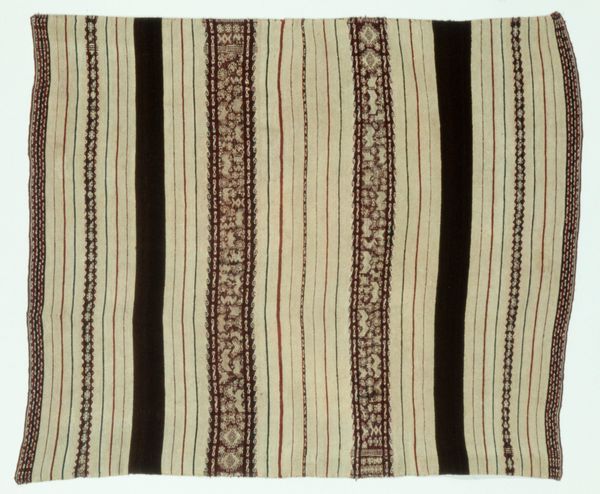
graphic-art, weaving, textile
#
art-deco
#
graphic-art
#
pattern
#
weaving
#
textile
#
geometric
#
decorative-art
Dimensions: height 34 cm, width 93.2 cm, height 11 cm, width 8.5 cm
Copyright: Rijks Museum: Open Domain
Editor: Here we have a fragment of printed silk, created by the Wiener Werkstätte sometime between 1910 and 1925. The bold geometric pattern really grabs your attention. It almost feels like a cityscape reduced to essential forms. What do you make of the imagery in this piece? Curator: It's fascinating how this fragment speaks volumes about its era. The Art Deco movement often utilized geometric patterns to convey modernity and progress. Look closely at the motif – do you see the abstracted forms suggestive of trees or fountains? These recall nature but are rendered with machine-age precision. Editor: I do see it now! Almost like nature, streamlined. Is that tension intentional? Curator: I think so. There's a constant interplay between organic shapes and rigid geometry. This could be seen as symbolic of humanity’s relationship with nature during the early 20th century – a desire to control and refine the natural world, but also to find beauty within it. These weren't just decorative choices. They're mirroring cultural anxieties and aspirations. Editor: So the patterns aren't just aesthetically pleasing; they are also encoded with deeper meanings and values. I guess you could analyze the patterns as visual records of a time in transition? Curator: Precisely. The fragment reflects a desire to synthesize nature, industry, and the human spirit. I like your point about records. The zigzags could suggest movement, progress, dynamism. All these details are interconnected! Editor: I never considered textile patterns as carrying such weight, but understanding the symbolism definitely enhances my appreciation. Thanks! Curator: It’s precisely this layering of meaning that keeps these artifacts so compelling to decode. The language of symbols enriches how we can consider historical artifacts.
Comments
No comments
Be the first to comment and join the conversation on the ultimate creative platform.
